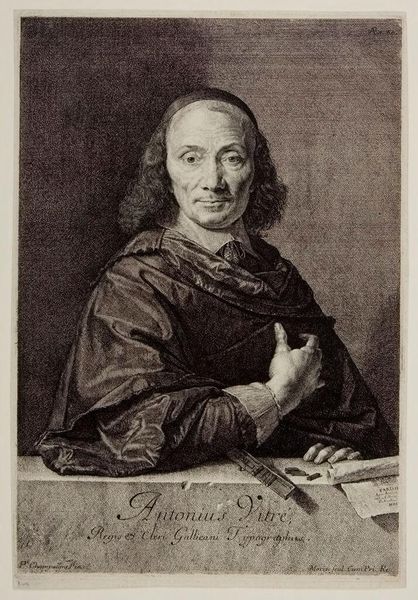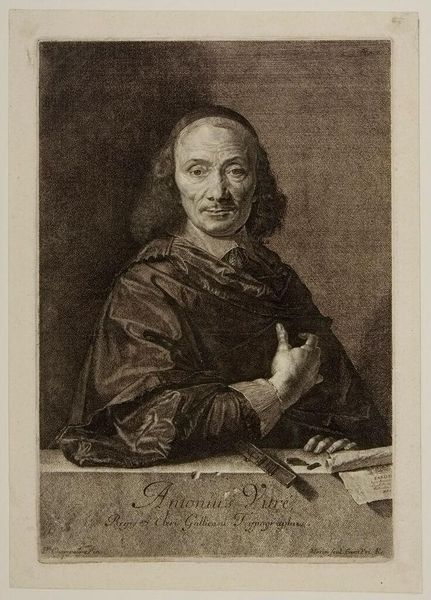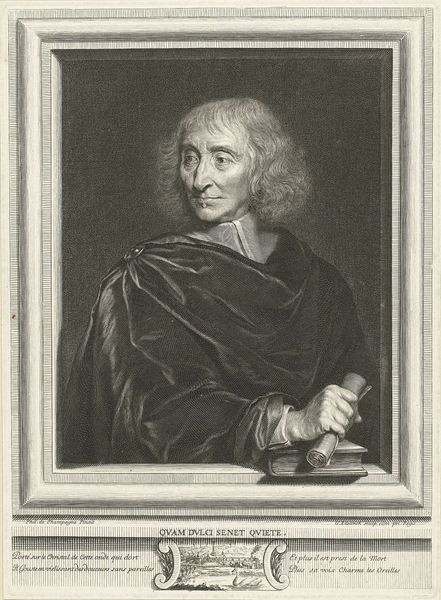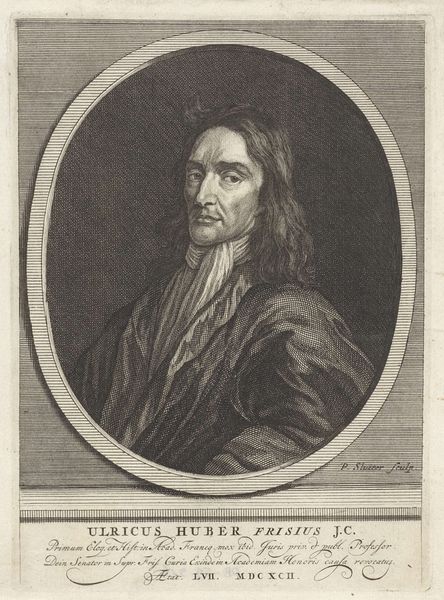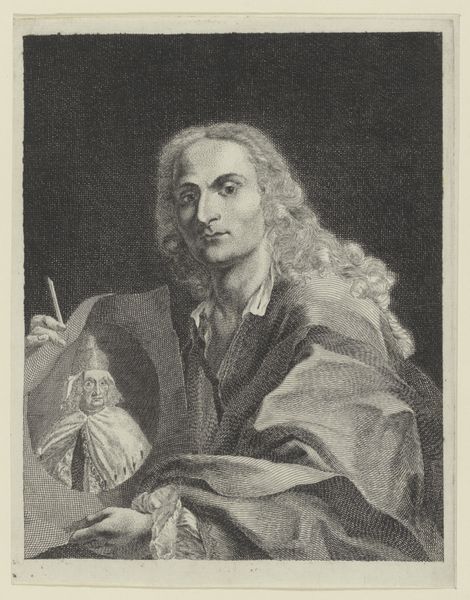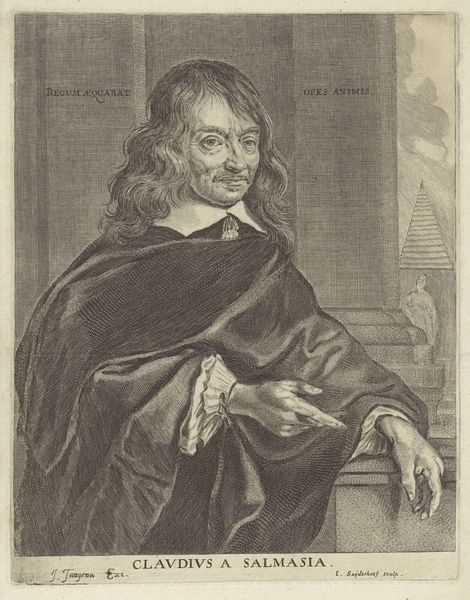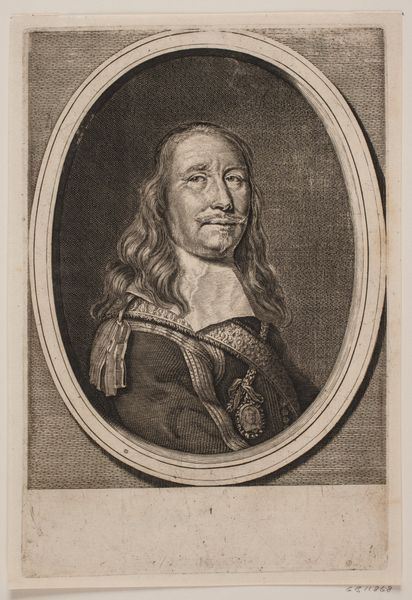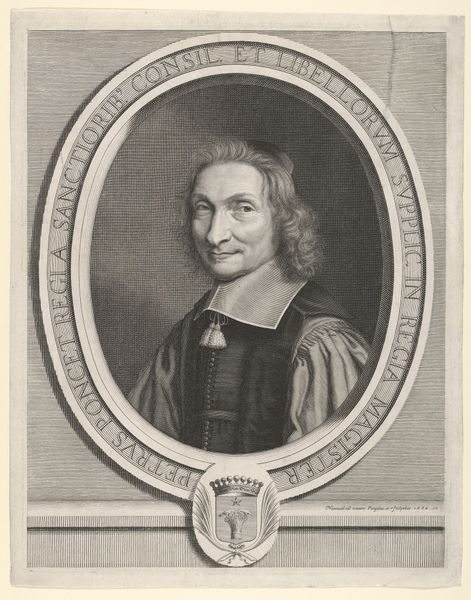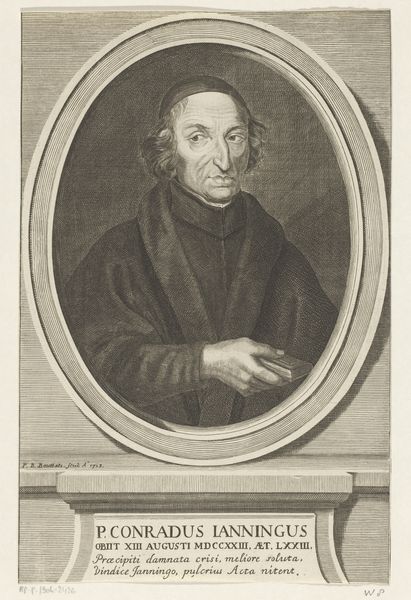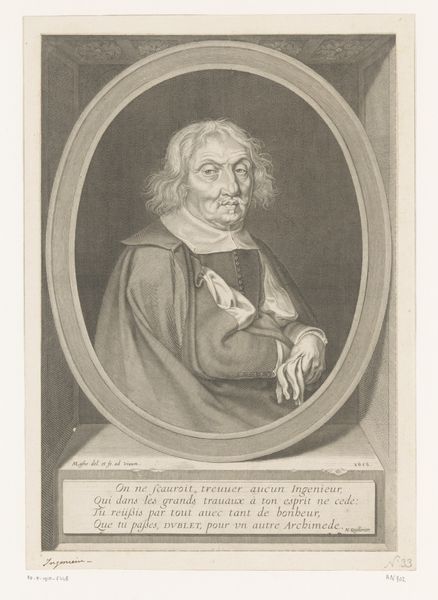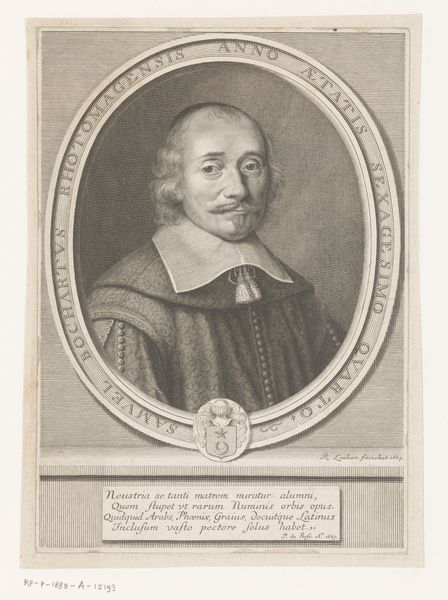
drawing, print, engraving
#
portrait
#
drawing
#
baroque
# print
#
old engraving style
#
men
#
portrait drawing
#
engraving
Dimensions: image: 12 3/16 x 8 3/8 in. (31 x 21.2 cm)
Copyright: Public Domain
Curator: Here we have Jean Morin’s engraving of Antoine Vitre, royal typographer, dating roughly from 1605 to 1650. What strikes you about it? Editor: The details are exquisite. The etching masterfully captures a sense of weary wisdom in the subject's eyes. There is something both elegant and somber in his gaze, the subdued palette enhancing a quiet reflection. Curator: Considering his profession, I immediately look at how the tools of his trade are depicted. Note the clarity with which the burin and papers are rendered. This connects the portrait directly to Vitre's labor. Editor: Absolutely. But beyond that, who *was* Antoine Vitre? During a time of considerable religious and political upheaval in France, the power and control of printing presses by those associated with the royalty offer clues about production of knowledge and potentially suppression of dissident voices. What role did Vitre play within the broader framework of 17th-century French society? Curator: That's astute. Royal typographers controlled a crucial medium of disseminating information and consolidating power. Examining the paper used for such prints, and who consumed them, reveals much about class and literacy at the time. Editor: Exactly. His portrait, his gaze—they reflect more than just his personal story; they whisper about the socio-political narratives interwoven within his identity as the royal typographer during the Baroque era. The image is not merely representational but tells something important about how knowledge production happens. Curator: And the engraving technique itself adds another layer. It represents a reproducible image, a democratizing factor despite the controlling apparatus of royal production, wouldn't you agree? Editor: Up to a point. While engravings allowed for wider distribution, accessibility was likely still restricted. This portrait served a specific function within a carefully maintained social hierarchy. Curator: It makes one consider the engraver’s process as well, what does it mean to recreate an individual in print? We’ve talked about this artwork in the context of French royalty, production, class, identity—each perspective, as I reflect, seems crucial for a nuanced reading. Editor: Precisely. This work operates as an entry point, connecting personal identity with complex, historical structures.
Comments
No comments
Be the first to comment and join the conversation on the ultimate creative platform.
